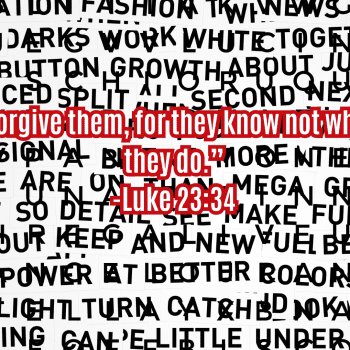I’m super breaking my supposed rule that I won’t link to the Marshall Project here because you should be following them on Twitter. You should be following them on Twitter! And you can donate to their work here. Anyway, check out their “Next Year in Criminal Justice“:
The challenge at the end of any year on any beat is to make sense of the great majority of stories that fall somewhere in the middle. What’s going to “trend” in 2016 in criminal justice, and what’s not, and how can anyone possibly tell? Here are my best guesses organized into two categories. Themes and topics I think you’ll be hearing a great deal about in 2016. And stories you’ve heard a lot about this past year that might for one reason or another recede from the headlines. Y’all can remind me next December about how right or wrong I was.
“Miami’s Notorious Jail Fights Back Against Rape”:
…As is often the case, success in prevention uncovers more contagion. Since establishing reforms, the number of reports about sexual abuse and harassment at the jails more than doubled, from 18 reported incidents in 2010 to 41 in 2013. In 2014, the total was 26. With changes like the ones in Miami, such spikes are not unusual, said Marcia Morgan, the executive director of Migima, a corrections consulting firm hired by Just Detention International to evaluate the Miami jail project from 2010 to 2013. “I think the bigger piece is the cultural change,” said Morgan. “There was a lot of fear in the beginning that inmates will just report all the staff, so why should we educate these inmates anyway?”
more–notable to me for the role of self-image here. Rape jokes were hilarious until it turned out that this guy’s specific actual jail was notoriously unsafe, and then suddenly they were embarrassing. That change of heart is… encouraging, from a certain angle. Also “…Miami’s system, the country’s eighth largest, became one of the first large urban jails to comply with federal prison standards for protecting inmates from sexual assault. It was a ‘monumental achievement,’ a federal monitor wrote in 2014.”
“Watch Alvin Ailey Dancers Rehearse a Piece About Being Locked Up”:
The holiday season can trigger certain, sometimes painful childhood memories for choreographer Kyle Abraham — it was the time of year when his mother would receive a phone call from her brother in prison. “Once the phone calls ended, the sadness set in,” he says. “On both ends.”
That palpable feeling of separation helped inspire his latest work for the Alvin Ailey American Dance Theater, “Untitled America: First Movement” (watch an exclusive clip from a rehearsal, below). The piece is the first of a three-part modern dance series that will explore the impact of prison on families.
more–always pleased when two of this blog’s interests collide.
“We Owe It to Freddie Gray: Inmate ‘Wild Rides’ Must End”:
The prisoner transport vehicle has been called “a casket on wheels” by Baltimore city prosecutor Janice Bledsoe and she couldn’t be more correct. At least 25 of my almost 100 rides as an inmate at York Correctional Institution convinced me that I was about to die. It is too bad it took the death of Freddie Gray for the prosecutors to finally acknowledge the risk prisoners in transport vehicles face.
“The Unlikely Rise of Restorative Justice in a Conservative Upstate New York County”:
When officials in rural Genesee County, New York, decided 35 years ago it was time to replace their old jail, they wanted to build something not just better but bigger. Doug Call, an assistant county attorney, thought that was a mistake. Though he lacked a law enforcement background, Call had seen enough of traditional punitive criminal justice—as an Air Force JAG officer and during the nearby Attica prison uprising nine years earlier—to put his faith in sentencing alternatives.
His arguments went nowhere with county leaders, so Call took matters into his own hands. He announced a campaign for sheriff on a no-new-jail platform against the law-and-order incumbent. The lifelong Republican was no revolutionary. But he was pushing ideas that wouldn’t go down easily in a deeply conservative working-class region dotted with dairy farms, small towns, and a disproportionate share of New York’s state prisons. Even so, Call won the election. …
The story of Genesee Justice explains why restorative justice has had such a hard time catching on—and sheds light on whether it ever will.
more–a solid story, equal parts inspiring and sad. (Touches on some of the issues I yapped about here.) But in the emphasis on strict supervision, monitoring, and mandatory treatment you should hear the scrape of tools that will be used against the intentions of their designers. I guess that’s as good a note to end the year on as any.















